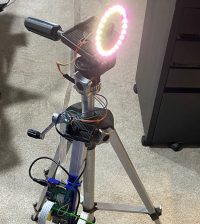- How to Adjust X and Y Axis Scale in Arduino Serial Plotter (No Extra Software Needed)Posted 2 months ago
- Elettronici Entusiasti: Inspiring Makers at Maker Faire Rome 2024Posted 2 months ago
- makeITcircular 2024 content launched – Part of Maker Faire Rome 2024Posted 5 months ago
- Application For Maker Faire Rome 2024: Deadline June 20thPosted 6 months ago
- Building a 3D Digital Clock with ArduinoPosted 11 months ago
- Creating a controller for Minecraft with realistic body movements using ArduinoPosted 12 months ago
- Snowflake with ArduinoPosted 12 months ago
- Holographic Christmas TreePosted 12 months ago
- Segstick: Build Your Own Self-Balancing Vehicle in Just 2 Days with ArduinoPosted 1 year ago
- ZSWatch: An Open-Source Smartwatch Project Based on the Zephyr Operating SystemPosted 1 year ago
Raspberry Boom Is Able to Detect Inaudible Sounds

OSOP, which found Kickstarter success with its Raspberry Shake seismograph add-on board for the Raspberry Pi, has now returned with a Raspberry Boom add-on board and infrasound sensor that detects inaudible sound. The same Kickstarter campaign is also selling a new Raspberry Shake and Boom product that combines the Boom with the seismograph capabilities of the Shake.
Thanks to a differential pressure transducer sensor, this low-frequency atmospheric home monitor device enables detection of sound in the 0.05 Hz to 20 Hz range, which is inaudible to the human ear.
The Raspberry Boom’s onboard timer can help match detected sound to known events. The device can stream in real-time to the web and an Android-based mobile app.
You can also be connected with any Raspberry Boom user in the OSOP’s networked community to analyze infrasound signals from any other user in real time.
There are no open source hardware claims, but you can download STL/DXF files from diy.raspberryshake.org and build your own enclosure.
At Raspberry Boom’s Kickstarter page you can find different packages for purchase, starting from $179 for the Boom HAT board which works with any sized Raspberry Pi as well as the Raspberry Pi Zero WH.















